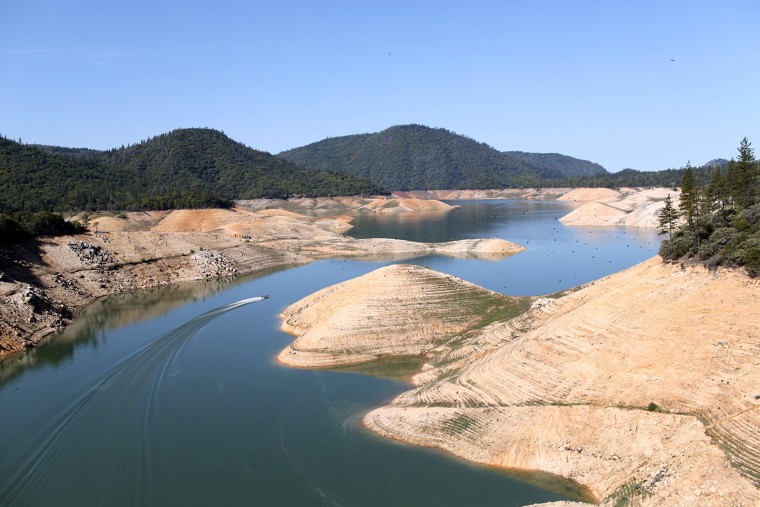Scientists have already found a connection between the rapid melting of Arctic sea ice and warmer ocean temperatures and higher sea levels — which pose a flood threat to scores of coastal communities around the globe.
Now researchers have produced a computer simulation that shows the continued loss of ice in the Arctic could reduce rainfall in California and worsen future droughts in the state.
A study by Lawrence Livermore National Laboratory released Tuesday projects that by mid-century the 20-year median for rainfall in California will drop by 10 percent to 15 percent, solely because of the loss of ice and warming temperatures in the Arctic.
Related: U.S. report contradicts Trump team, says Global Warming mostly man-made
The possible connection between climate at the top of the globe and drought in California was first suggested by researchers in 2005. But that study ran afoul of conventional wisdom at the time, which suggested California’s prolonged dry spells were tied to atmospheric changes in the subtropics.
The new study, directed by Ivana Cvijanovic, ties the two theories together — showing that sea ice losses can contribute to a global energy imbalance that effectively increases winds and temperatures in the subtropics.
Those changes in the upper atmosphere south of the Equator, in turn, help power a ridge of high pressure in the northern Pacific Ocean that pushes weather systems northward. Instead of the storms cycling through California, they will stay to the north and deposit most of their moisture in Alaska, Canada and the U.S. interior, the study predicts.

A high-pressure wall in the Pacific became so persistent from 2012 to 2016 that climatologists named it the “Ridiculously Resilient Ridge.” Between the winter of 2011-12 and 2015-16, downtown Los Angeles got an average of only 7.75 inches of rain a year, only about half the average for the 135 years before that.
The Lawrence Livermore computer simulation did not judge whether conditions in the Arctic played any role in the recent drought, the worst on record for California. But the patterns predicted by the new research resemble those that occurred in California over the super-dry years.
Many factors have an impact on past and future droughts in the Golden State. Among the contributors can be particulates from volcanoes, greenhouse gases from a variety of man's activities or pollutants that come from slash and burn farming in the Third World and from coal-fired electricity plants in the developed world.
The research by Cvijanovic and her colleagues assumes that sea ice decline will continue at its current rate, leaving the Arctic free of ice during the summer-time by the middle of this century.
Researchers have previously found that human-made greenhouse gases are warming the Arctic twice as fast as the reset of the planet.
“Our study identifies one more pathway by which human activities could affect the occurrence of future droughts over California — through human-induced Arctic sea-ice decline,” Cvijanovic said.
Activists who are trying to demonstrate the urgency of slowing (and potentially eventually reversing) the warming of the planet, previously argued that “the fate of Greenland is the fate of Miami.”
In other words, the decline of the massive ice fields around Greenland is raising sea levels, and contributing to flooding in places like Florida.
Related: African-Americans face more pollution-related health hazards, new report shows
The new findings from Lawrence Livermore will help demonstrate to the public that ice loss can crop up in other parts of the globe, in unexpected ways, said Rafe Pomerance, chair of the environmental consortium Arctic 21 and a former Assistant Secretary of state in the Clinton Administration, who oversaw climate issues.
“The Arctic is driving sea level rise globally, but now we know it may be driving the severity of droughts that hit California,” said Pomerance. “The sea-level rise findings and now the findings about mid-level latitude weather changes [can] make a very direct connection to public opinion and to motivating policymakers.”
